Fireplaces are an extremely popular home feature. According to a report by the Hearth, Patio, & Barbecue Association, more than half of the homes in the United States have chimneys. Although many homes have a fireplace, most of them are inactive.
Many homeowners mistakenly believe that they do not need to service their chimney if they do not regularly use them. This isn’t the case! Whether you use your fireplace once or 100 times per year, every chimney needs regular sweepings and inspections. This regular maintenance ensure your chimney is free from damage, deterioration, buildup, and other performance problems.
How often should I get a chimney inspection?
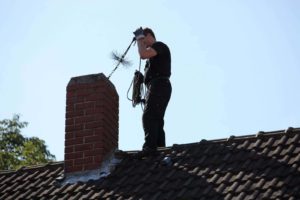 The Chimney Safety Institute of America (CSIA) recommends all chimneys – regardless of fuel source or how often they are used – be inspected at least once per year. The National Fire Protection Agency (NFPA) also advises:
The Chimney Safety Institute of America (CSIA) recommends all chimneys – regardless of fuel source or how often they are used – be inspected at least once per year. The National Fire Protection Agency (NFPA) also advises:
“Chimneys, fireplaces, and vents shall be inspected at least once a year for soundness, freedom from deposits, and correct clearances. Cleaning, maintenance, and repairs shall be done if necessary.”
Why should I have a chimney sweeping if I don’t use it?
Fireplaces that are not frequently used are in the highest risk category for undetected damage. Because they are not regularly used, homeowners may miss small performance problems that indicate the presence of a bigger chimney issue. A rarely-used fireplace may have less soot and ash to remove, but it still needs professional inspections annually to ensure it is safe to use.
What could be causing my chimney damage?
There are a number of things that can cause chimney damage – even if you do not regularly use your fireplace. The following are three common types of damage that are often seen in infrequently used fireplaces.
- Outdoor Exposure: Damage to the exterior masonry of a chimney can occur regardless of how much you use the fireplace. Both severe weather and normal exposure to the elements can cause wear and tear to the chimney’s bricks and mortar. Without repairs, a small crack can quickly turn into a large chunk of missing masonry.
- Moisture: Water is extremely damaging to both the interior and exterior of a chimney system. Moisture from rain, snow, and even sprinklers can cause damage to the bricks and mortar of the chimney over time. Interior fireplace components are designed to withstand heat, not moisture. It can also rust or get damaged by water from a leaky chimney.
- Nests & Pests: Unused chimneys provide prime real estate for birds, bugs, raccoons, roof rats, and more. In addition to causing damage to the fireplace and chimney, an animal entry can expose you and your family to a variety of bacteria, pests, and parasites.
No matter how often you use your fireplace, it is important to have annual inspections to keep your chimney system – and the rest of your home and family – safe. For more information on annual chimney inspections or to schedule your next appointment, contact Jack Pixley Sweeps today!
Did you just install a new fireplace or stove in your home? If so, there is one more step to the installation process before your new heating appliance is safe to use – the smoke test.
What is a smoke test?
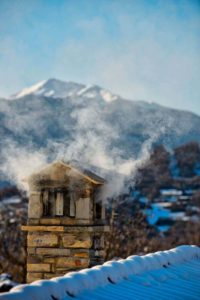 A smoke test, or a chimney pressure test, is required by the National Fire Protection Association Standard 211; the test should be performed by a professional after installing a new fireplace or stove. This test is designed to identify any defects, flaws, or problems in your fireplace system that might allow smoke, gas, or dangerous fumes to leak into your home. Likewise, the smoke test also ensures that your chimney is drafting correctly and if the flue needs to be relined or not.
A smoke test, or a chimney pressure test, is required by the National Fire Protection Association Standard 211; the test should be performed by a professional after installing a new fireplace or stove. This test is designed to identify any defects, flaws, or problems in your fireplace system that might allow smoke, gas, or dangerous fumes to leak into your home. Likewise, the smoke test also ensures that your chimney is drafting correctly and if the flue needs to be relined or not.
The process of a smoke test
During the first part of a smoke test, the chimney professional try to establish correct flue draw. To do this, a blowtorch is used to light a smoke pellet that produces a distinctive odor. Once smoke is seen coming out of the top of the chimney, the next phase of the smoke test begin.
After establishing flue draw, the chimney technician seals the top and bottom of the flue along with doors, ash pit covers, and vents. Once the entire chimney is sealed, the technician begin checking the inside and outside your home for signs of a leak. This includes checking rooms adjacent to the chimney, all sides of the chimney, and even adjacent attic and roof spaces. If any leaks are found, recommendations are made on solution for repairs.
The importance of smoke tests
A smoke test might seem like an unnecessary step, especially if your fireplace is newly built and professionally installed. However, this safety test is an important part of ensuring your fireplace can burn safely. A smoke test ensures the chimney has correct flue draw and no leaks, it also helps to prevent future draft and smoking issues. Likewise, it also significantly reduce the chance of chimney fire or carbon monoxide poisoning in the future. This make your new heating appliance safer to use and give you peace of mind for years to come.
Maintenance after a smoke test
While a smoke test is an important part of preparing to use your new fireplace, it is not the only maintenance your appliance needs. Annual maintenance is the best way to ensure your fireplace continues to burn safely and efficiently year after year. An annual chimney sweeping removes blockages and buildup in your chimney; this helps the fireplace to draft correctly and prevents accidental chimney fires.
Annual inspections are also an useful tool in identifying damage or deterioration before they cause serious problems. If you just installed a new heating appliance or built a new chimney, it is important to perform a smoke test to ensure it is drafting safely. For more information on smoke tests, schedule your appointment today by contacting Jack Pixley Sweeps today at 763-422-0481.
Summer is the season of flourishing plants and animals – and insects. Bugs run the gamut from minor annoyances to major pests, and it can sometimes be difficult to tell the difference between good bugs and their more malicious counterparts.
One insect that often suffers from a bad reputation is the mud dauber wasp. Although significantly less aggressive than other members of the wasp and hornet family, their penchant for building nests on the sides of man-made buildings – and chimneys – often bring mud daubers to the attention of both homeowners and chimney sweeps.
All about mud dauber wasps
Mud dauber wasps are solitary, rarely sting, and are known for eating other insects. Long and lean, these yellow and black wasps can be found throughout the United States. Mud dauber wasps get their name in part for their unique behavior around water. They are often seen around the edges of ponds and mud puddles collecting the mud needed to build their nests.
Mud dauber wasps are not known for being aggressive and rarely sting. They prey on spiders, collecting the insects and depositing them in their nests. The lack of aggressive behavior coupled with their ability to control spiders and insects make mud dauber wasps less of a nuisance than most other wasps and hornets.
Mud dauber wasps and chimneys
Mud dauber wasps prefer to build their unique nests on the sides of man-made structures. These rounded, tube-like nests are only home to one solitary mud dauber wasp. The females create the nests by carrying mud on their back before forming it into the easily recognizable nest shape. Mud dauber nests appear either individually or in rows. While rows of nests may look like the home of a swarm, it is all the work of one solitary wasp.
Mud dauber nests are often found on the outside of chimneys in the summer. While these little mud nests are not known for damaging the underlying masonry, they should still be removed with caution. There are several ways to remove mud dauber nests. The easiest method for nest removal is to simply hit it with a broom; the mud nest should easily fall away. If this does not work or the nest is not easily accessible, a metal scraper tool can be used to remove the nest.
Alos, caution should be taken to not damage the underlying masonry. While small amounts of water can help remove residue from the chimney it is not recommended to power wash the areas where nests are present; the pressure from power washers can significantly damage masonry.
Homeowners and those allergic to wasp, hornet, or bee stings should take caution when attempting to remove mud dauber nests. While they do not display aggressive tendencies – even when their homes are being removed – mud daubers do sting and can sting multiple times without dying.
Call Jack Pixley
If you see mud dauber wasps building a nest on your chimney or home this summer, don’t panic. These gentle insects control pests, and their nests can be easily removed. For more information on mud dauber wasps and how they can affect your chimney system, contact Jack Pixley Sweeps today.
For homeowners who own a fireplace system, deciding when to have it swept can sometimes be a mystery. Most of us know our chimneys need regular maintenance. The guesswork often determines when and how often we have our chimneys swept.
Most chimney sweeps recommend having your chimney swept at least once per year. However, there may be other reasons to call the chimney sweep. Below are some signs that your chimney needs sweeping!
Heavy use.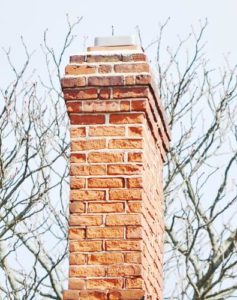
Do you use your fireplace as a primary heating source for your home? If so, it may need to be swept several times during the burning season. According to the Chimney Safety Institute of America, chimneys should be swept any time there is 1/8th of an inch of buildup in the flue. In normal burning conditions, this amount of buildup occurs after a full cord of wood is burned. Do you burn more than a cord of wood each burning season? Consider having a mid-season chimney sweeping done.
Before burning season.
After several months of sitting idle, your chimney may need to be cleaned before using the fireplace again. Sweep the chimney in the late summer or early fall before the burning season begins! This ensures that there are no debris or blockages in the flue. Also, it is especially important in areas where migratory birds are present or other animal entry into the chimney may have occurred.
New home.
Have you recently purchased a home? If you have, you may want to have the chimney swept before using the fireplace. Most home inspections include a cursory inspection of the fireplace system. Consequently, many inspectors may lack the knowledge to truly diagnose chimney problems. In addition, they typically will not clean the chimney. Having the chimney swept allows you to assess the condition of the fireplace system before you use it.
Performance problems.
Leaks, drafts, and odors – oh my! Is your chimney experiencing burning or performance problems? If so, a chimney sweeping and inspection may be necessary to discover the root cause of the problem. According to the National Fire Protection Association, “Chimneys, fireplaces, and vents shall be inspected at least once a year for soundness, freedom from deposits, and correct clearances. Cleaning, maintenance, and repairs shall be done if necessary.”
Annual maintenance.
Unless you are experiencing any of the reasons above, an annual chimney sweep is recommended for all homes. Having annual maintenance allows your chimney sweep to keep your chimney free from buildup or debris. Plus, it allows them to regularly assess the condition of your chimney. This allows the sweep to identify and address any areas of new or worsening deterioration. Also, as well as recommended any changes or improvements that need to be made to your fireplace or chimney system.
Regular chimney sweepings can keep you and your family safe an extend the life of your fireplace system. So, let your family continue to enjoy your fireplace for years to come. If you need to schedule your next chimney sweeping, contact Jack Pixley Sweeps today!
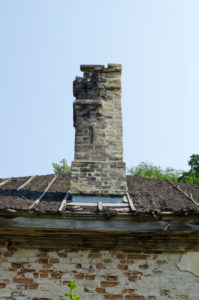 There are a number of ways we get our fireplaces ready for winter; having them swept, buying new firewood, and sweeping out ashes and coals are all ways to make sure your fireplace is safe and ready to use. However, there may be hidden hazards hiding in your chimney liner.
There are a number of ways we get our fireplaces ready for winter; having them swept, buying new firewood, and sweeping out ashes and coals are all ways to make sure your fireplace is safe and ready to use. However, there may be hidden hazards hiding in your chimney liner.
A properly lined chimney is an important part of the helping your fireplace burn safely, efficiently, and last longer. Because the majority of the chimney liner cannot be seen without an inspection and the use of technology such as closed circuit cameras, damage to the chimney liner may go unnoticed.
How a chimney liner protects your home
According to the Chimney Safety Institute of America, chimney liners are “A clay, ceramic, or metal conduit installed inside of a chimney, intended to contain the combustion products, direct them to the outside atmosphere, and protect the chimney walls from heat and corrosion.”
Because of their important purpose, a requirement for chimney liners is included in most state and local building codes. Chimney liners play an important role in protecting your home against the heat, gas, and smoke created in your fireplace. Protecting against a transfer of heat keeps surrounding walls, beams, frames, and other building materials from reacting to the heat in the chimney; when a chimney liner is damaged, the National Bureau of Standards found adjacent building materials can catch fire in as little as three hours due to heat transfer.
Chimney liners also keep smoke and gasses from getting into the air supply of your home. A quality, undamaged liner helps keep toxic byproducts of combustion, including the extremely dangerous carbon monoxide gas venting safely up and out of your chimney instead of lingering in the flue or seeping into your home. This is especially important during the winter when most homes have their doors and windows tightly closed, letting in little outside air.
Does my chimney need to be relined?
Because of the difficult to access location, length, and size of the chimney liner, repairs in specific areas are often too difficult to complete. Because of this, a complete chimney relining may be recommended. There are several reasons why a chimney might need to be relined.
Damage. Damage to the chimney liner can cause it to lose the ability to protect your home against heat transfer, as well as allow smoke and gas into your home’s air supply.
New fireplace or insert. A new fireplace or insert may have different venting requirements than your old unit; relining the flue can ensure your new fireplace burns as safely and efficiently as possible.
Changing fuel sources. The byproducts of combustion from wood, gas, coal, and pellet fires are all different; because of this, they require different types of chimney liners. If you have changed fuel sources, a new chimney liner can protect your flue.
Winter weather is just around the corner; make sure your fireplace is ready to be safely used all year round by having the liner checked. For more information on the importance of a quality chimney liner or to have your chimney inspected, contact Jack Pixley Sweeps today!
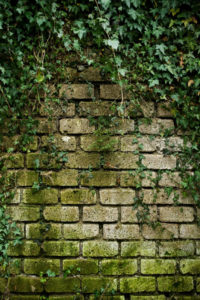 Climbing plants and vines might seem like a whimsical addition to the exterior of your home. Unfortunately, recreating this classic curb appeal can cause serious damage to your masonry. If you have climbing vines on your chimney, take advantage of the first freeze of the year and remove them; roots and tendrils are easier to remove as they dry out during the winter, and doing so can help protect your chimney.
Climbing plants and vines might seem like a whimsical addition to the exterior of your home. Unfortunately, recreating this classic curb appeal can cause serious damage to your masonry. If you have climbing vines on your chimney, take advantage of the first freeze of the year and remove them; roots and tendrils are easier to remove as they dry out during the winter, and doing so can help protect your chimney.
How vines damage your masonry
While climbing vines such as ivy and wisteria can be charming, they can also cause significant damage to your masonry. The following are the three major ways that climbing plants cause chimney damage.
- Trapped moisture: A thick layer of vines and leaves can leave little room for sunlight to shine through. This dark and damp environment traps moisture next to or on the surface of the masonry.
- Insects: Vines can be home to many insects; unfortunately, these climbing plants can give bugs and pests direct access to your home, wood trim, and siding.
- Roots and tendrils: Climbing plants need something to grip as they grow; for vines growing onto masonry, their roots and tendrils can create cracks and holes in the bricks and mortar as a way to grip and grow.
Climbing vines and the risk of fire
If you want to keep the vines on your chimney, winter is still a good time to have them trimmed. Dry, brittle branches near the top of the chimney can increase the risk of fire during the winter; stray sparks and embers from the chimney can land on and easily ignite the drying plants. Removing them from the area around the top of the chimney can protect the chimney while also preventing accidental fires.
Removing vines from the chimney
Because the roots and tendrils of climbing plants go directly into the masonry, removing them can be difficult. Removing vines is often easier after the first freeze of winter; the cold temperatures cause the vines to become dry and brittle, making them easier to cut, pull down, and remove.
If you plan on removing the entire plant, cutting off the vines at the roots or base is most effective. Doing this prevents the rest of the plant from getting nutrients, and the vines will eventually die and fall away on their own. It is not recommended to forcibly pull vines off of the masonry as it can cause more harm than good. If they have been growing for long periods of time their tendrils might be deep; pulling them away from or off of the masonry can even bring the bricks or mortar with them.
Climbing vines might seem like a charming way to add curb appeal to your home, but they can actually cause serious damage to your masonry. This year, take advantage of cold winter temperatures and remove vines roots and tendrils as they dry out; removing vines may exposure underlying chimney damage that needs to be repaired quickly. For more information on how vines can damage your chimney, contact Jack Pixley Sweeps today.
 The Chimney Safety Institute of America (CSIA) recommends all chimneys – regardless of fuel source or how often they are used – be inspected at least once per year. The National Fire Protection Agency (NFPA) also advises:
The Chimney Safety Institute of America (CSIA) recommends all chimneys – regardless of fuel source or how often they are used – be inspected at least once per year. The National Fire Protection Agency (NFPA) also advises:
 A smoke test, or a chimney pressure test, is required by the
A smoke test, or a chimney pressure test, is required by the 
 There are a number of ways we get our fireplaces ready for winter; having them swept, buying new firewood, and sweeping out ashes and coals are all ways to make sure your fireplace is safe and ready to use. However, there may be hidden hazards hiding in your chimney liner.
There are a number of ways we get our fireplaces ready for winter; having them swept, buying new firewood, and sweeping out ashes and coals are all ways to make sure your fireplace is safe and ready to use. However, there may be hidden hazards hiding in your chimney liner. Climbing plants and vines might seem like a whimsical addition to the exterior of your home. Unfortunately, recreating this classic curb appeal can cause serious damage to your masonry. If you have climbing vines on your chimney, take advantage of the first freeze of the year and remove them; roots and tendrils are easier to remove as they dry out during the winter, and doing so can help protect your chimney.
Climbing plants and vines might seem like a whimsical addition to the exterior of your home. Unfortunately, recreating this classic curb appeal can cause serious damage to your masonry. If you have climbing vines on your chimney, take advantage of the first freeze of the year and remove them; roots and tendrils are easier to remove as they dry out during the winter, and doing so can help protect your chimney.